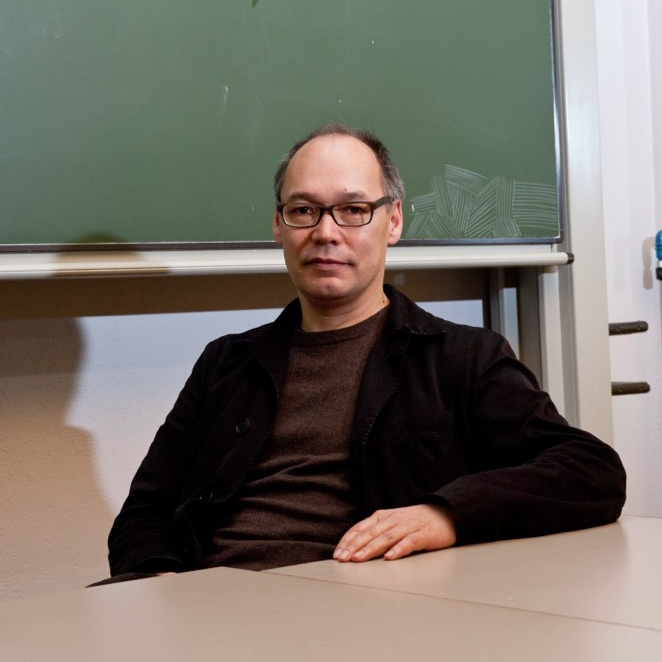Katedra Kształtowania Środowiska Mieszkaniowego WA PK ma zaszczyt zaprosić na wykład Profesora Nicolasa Phama, pt. Drawing the City, który odbędzie się 8 kwietnia 2024 roku o godz. 10.00 w Sali P6 w budynku przy ul. Podchorążych 1.
Po studiach w Ecole Polytechnique Fédérale de Lausanne (EPFL) w Szwajcarii, pracował w Amsterdamie z Hermanem Hertzbergerem i Jo Coenen, w Londynie z Alanem Colquhounem i Johnem Millerem, wykładał w EPFL, gdzie w latach 1992-1997 był asystentem prof. Luigiego Snozziego, a następnie wykładowcą w Instytucie Teorii i Historii Architektury EPFL.
Pracował głównie nad zagadnieniami związanymi ze skalą miejską i regionalną, jako szef komisji ds. przestrzeni publicznych kantonu Vaud i w Holandii, zwłaszcza nad planem generalnym rozbudowy miasta Utrecht, a także nad krajowym studium strategicznym Deltametropole. W latach 2000-2010 wykładał na Wydziale Architektury Uniwersytetu w Delft (Holandia). W latach 2010-2015 wykładał w Ecole Nationale Supérieure d’Architecture (ENSA) de Paris-Belleville, a od 2016 r. w ENSA de Versailles. Od 2005 r. jest kierownikiem programu magisterskiego w Haute École du Paysage, d’Ingénierie et d’Architecture (HEPIA) w Genewie, a od 2009 r. do tego roku Dziekanem Wydziału Architektury.
RYSUJĄC MIASTO
Samo pojęcie „przestrzeni” jest dalekie od jednoznaczności. Potwierdzają to znaczenia nadawane mu w pracach referencyjnych: z jednej strony nieokreślona przestrzeń, z drugiej ograniczony i określony obszar. Użycie tego terminu jest również często nieprecyzyjne, a nawet sprzeczne. A mnożenie się nowych terminów opisujących miasto – takich jak „Zwischenstadt” czy „Città diffusa” – na polu współczesnej myśli i debaty w niewielkim stopniu rozwiewa to zamieszanie…
Jak każde „dzieło o ogólnej zbiorowej istocie”, sfera publiczna musi być zrozumiała dla wszystkich, nawet jeśli oznacza to nadawanie jej różnych interpretacji: znacznik musi być jasno określony. Sfera publiczna, w przeciwieństwie do domeny prywatnej, rządzi się precyzyjnymi zasadami, które są przekazywane przez język. Zgodnie z podejściem strukturalistycznym lub lingwistycznym mówimy o gramatyce i słownictwie. Tak więc słowa używane do oznaczania form miejskich – droga, ulica, aleja, aleja, bulwar, plac – systematycznie wywołują bogate wyobrażenia, które pozostawiają miejsce na wyobraźnię, ale niewiele miejsca na dwuznaczność. Zgodnie z tym „aksjomatem” przestrzeń publiczna musi nie tylko posiadać skodyfikowaną formę, ale także organizować związaną z nią architekturę publiczną i prywatną. Tylko spójny system może pozwolić językowi funkcjonować i mieć sens.

We are pleased to invite you to the lecture delivered by Professor Nicolas Pham, an academic at Ecole Nationale Supérieure d’Architecture de Versailles entitled Drawing the City, that will take place in Room P6 at ul. Podchorążych 1, 08.04.2024 at. 10.00.
After studying at the Ecole Polytechnique Fédérale de Lausanne, EPFL, in Switzerland, and working in Amsterdam with Herman Hertzberger and Jo Coenen, in London with Alan Colquhoun and John Miller, he taught at EPFL, where he was assistant to Prof. Luigi Snozzi from 1992 to 1997, then lecturer at EPFL’s Institute of Theory and History of Architecture.
He has worked mainly on urban and territorial scales, as head of the public spaces commission of the Canton of Vaud and in the Netherlands, notably on a masterplan for an extension to the city of Utrecht, as well as on a national strategic study, the Deltametropole. From 2000 to 2010, he taught at the Faculty of Architecture at Delft University (NL). From 2010 to 2015, he taught at the Ecole Nationale Supérieure d’Architecture (ENSA) de Paris-Belleville, and since 2016 at ENSA de Versailles. Since 2005, he has been head of the Master program at the Haute École du Paysage, d’Ingénierie et d’Architecture (HEPIA) in Geneva and since 2009 until this year, head of Architecture.
DRAWING THE CITY
The very notion of „space” is far from unambiguous. This is borne out by the meanings given to it in reference works: on the one hand, an indefinite expanse, on the other, a limited and determined area. The use of the term is also often imprecise or even contradictory. And the proliferation of new terms to describe the city – such as „Zwischenstadt” or „Città diffusa” – in the field of contemporary thought and debate does little to dispel the confusion…
Like any „work of generic collective essence”, the public realm must be comprehensible to everyone, even if this means giving it different interpretations: the signifier must be clearly stated. The public realm, as opposed to the private domain, is governed by precise rules that are conveyed by language. According to a structuralist or linguistic approach, we speak of a grammar and a vocabulary. Thus, the words used to designate urban forms – road, street, avenue, alley, boulevard, square – systematically evoke a rich imagery that leaves room for the imaginary, but little room for ambiguity. Following on from this „axiom”, public space must not only possess a codified form, but also organize the public and private architecture associated with it. Only a coherent system can enable language to function and make sense.
